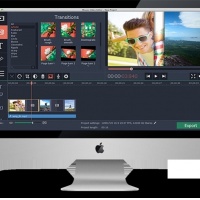Unified software for printed circuit board design projects is an essential upgrade to make your team as productive as possible. Yet many PCB design houses are still working with a scattered array of siloed software because that’s how they’ve always done it. Here is how unified software can make your PCB design project more efficient.
Saving Money
If you’re using several different tools to create printed circuit board designs, gerber files, maintain bills of material and track design requirements, you’re probably paying for software licenses for all of them. This adds up quickly. And that’s on top of the additional server space and bandwidth you have to maintain for each of those software applications. You can dramatically reduce these costs by using a unified software suite for your design projects. You’ll save even more money if you buy PCB design software that provides simulation engines and use-proofing, whereas some unified design software tools only consolidate the design functions and require you to export the files to another application or send them off to a contractor for these steps to be completed.
Getting unified design software that contains all of the functionality you need is generally cheaper than getting a tool that has 90% of what you need and then hiring someone to create the custom functions you need; and that’s without the risk of specialized tech support if the custom functions don’t play well with the rest of the design suite or creates problems in your output files. You certainly don’t have to worry about maintaining the only Windows NT system that runs the PCB design tool your senior engineer likes.
Saving Time and Hassle
One common problem with separate software applications is the need to export your design to import it into another tool for verification, modeling or testing. This is a waste of time if your existing PCB design suite can perform all of these functions itself. And if you’ve frequently had errors exporting files before importing them into other tools, you’ll see even greater benefits by eliminating the transfer step. The ability to let design checkers, thermal engineers or simulation engineers access your design from wherever they are located and review it certainly saves everyone time. If they make any changes to the design, your design engineers have immediate access to it.
Streamlined Process Documentation Creation
PCB router software is the best option when looking for streamlined process documentation creation – companies like Altium provide software to automatically maintain bills of material, requirements documentation and other documents as your engineers work. You can create the final process documentation at the push of a button in the viewer. It generates Gerber files, schematics and everything else you need automatically. This saves everyone time and money while minimizing mistakes that come from someone counting resistors on a board and manually entering it into a bill of material and parts list.
Unified software makes PCB design more efficient in so many ways. Switching to unified design software saves money and resources and reduces hassles and errors while getting better tech support when issues do arise. And your design engineers will save time and money by being able to create process documentation immediately as soon as they approve the final design.




